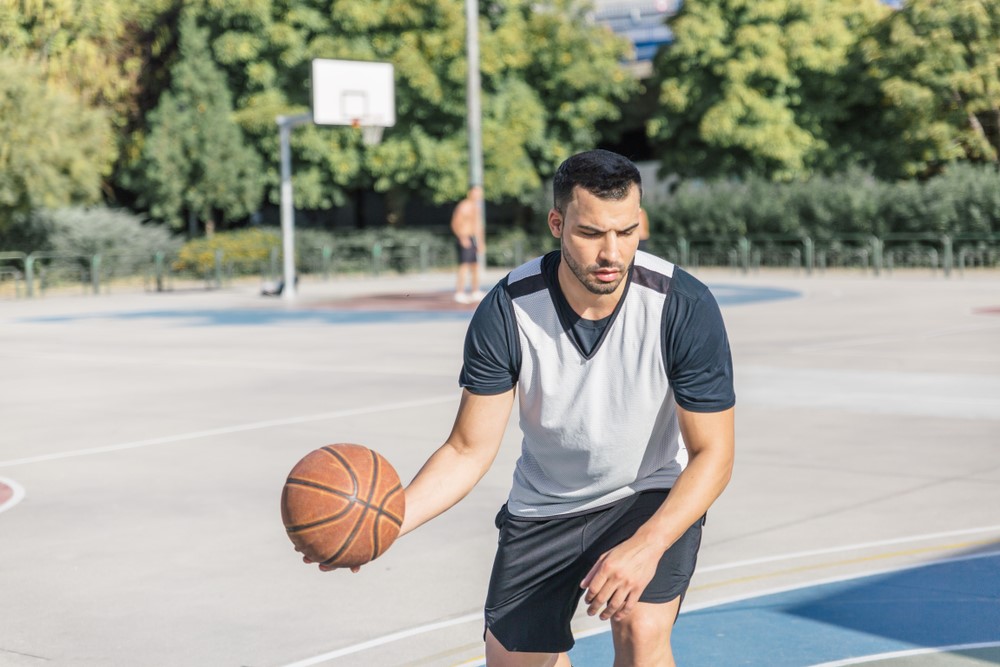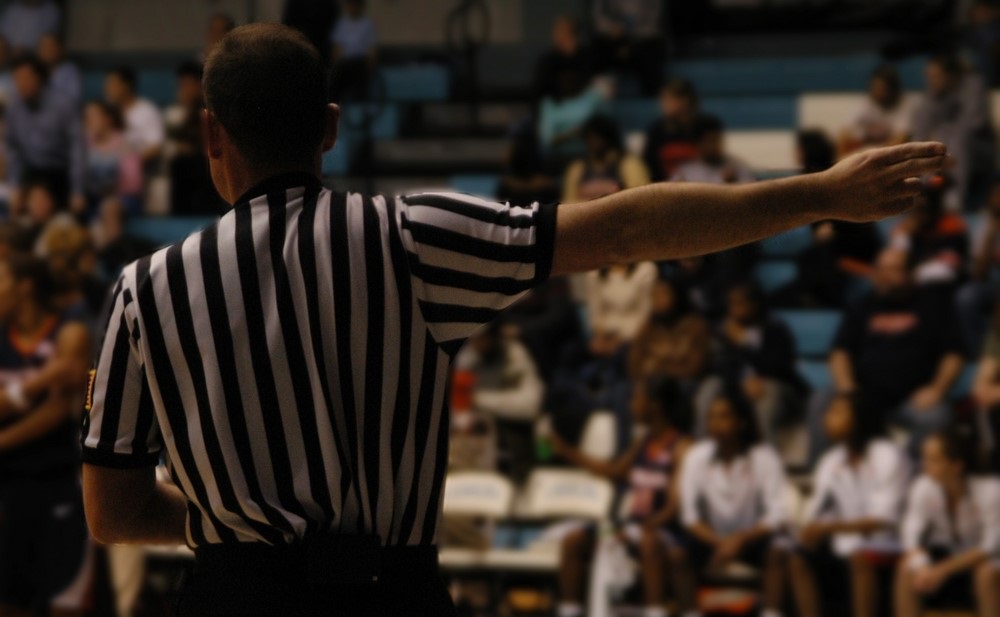
To optimize your performance while playing basketball, it is critical to understand the basic rules and regulations of the game. Knowing the ins and outs can help you avoid fouls and penalties leading to a loss.
Carrying is a violation similar to traveling or double dribbling. It is also known as “turning the ball over” or “palming the ball” and will be called by the referee if they see it.
The best way to avoid carrying is to understand what it is and ways to correct your techniques to reduce the chances of it happening.
Contents
- What Is Carrying in Basketball?
- Why Is It Important to Understand What Carrying Is?
- The Results of Carrying in Basketball
- How to Avoid Carrying in Basketball
- 1. Watch Your Hand Placement
- 2. Keep Your Head Up
- 3. Practice Like Crazy
- 4. Keep the Ball Low
- 5. Use the Tips of Your Fingers
- Types of Carrying in Basketball
- Final Thoughts
What Is Carrying in Basketball?
Before discussing why you should avoid carrying the ball, let’s discuss exactly what this term means.
Carrying the ball is much like a mixture of double dribbling and traveling. When a dribbling player carries the ball, they essentially allow their hand to touch or support the lower half of the ball or scoop or cup the ball while dribbling. Doing this will result in the ball coming to a rest for a split second.
A dribbling player’s hand underneath the ball while dribbling is an automatic penalty. However, it can be difficult for referees to call a carry because of the ball’s angle and position when the act occurs.
Why Is It Important to Understand What Carrying Is?

Basketball requires incredible skill, speed, quick thinking, and strategy. It is a fast-paced game loved by fans worldwide. To perform to the best of your ability, you must keep the game fair and play by the rules.
A carrying violation isn’t always done on purpose but will impact the game’s fairness every time. Making this move gives the basketball player an unfair advantage, allowing them to maneuver the ball in ways the opponent can not predict, giving them an advantage while passing or shooting the ball.
- Improved Ball Control: When you focus on avoiding carrying, you will gain better dribbling skills and improve your ball control, thus limiting the chances of losing your possession of the ball.
- Increased Team Spirit: Avoiding violations and penalties as much as possible gives a team more confidence and boosts their morale, thus reducing the chances of making more mistakes.
- Reduces the Number of Turnovers: If you get a carrying violation, it will likely result in a turnover. By steering clear of carrying, you will minimize the number of turnovers in the game.
- Increased Scoring Ability: When you avoid turnovers, you will maintain possession of the ball, providing more opportunities to score.
The Results of Carrying in Basketball

There are many consequences that come with carrying violations in basketball. Some have to do with penalties, and others affect the team mentally and emotionally.
Here are the most notable consequences associated with carry violations.
- Increase in Fouls: A foul call can be made when carrying is noticed by the refs. This can allow the opposing team an opportunity to make free throws and gain points.
- Increase in Turnovers: The most common penalty associated with carrying in basketball is turnovers. Turnovers give the opposing team control of the ball and can disrupt a possible scoring opportunity.
- Increased Rule Violations: Basketball rule violations can lead to disciplinary actions by league officials and refs for unsportsmanlike conduct.
- Decreased Team Morale: Frequent carry violations can lead to trouble between teammates. Players can become frustrated and lose confidence in themselves and the rest of the team.
How to Avoid Carrying in Basketball
To ensure the game you are playing is always fair, there are a few ways to avoid carrying in basketball. Mastering these skills will improve your technique and prevent violations from occurring.
1. Watch Your Hand Placement
If you struggle with controlling the positioning of your hands, practice keeping them on top of the ball as you dribble. Hand-eye coordination is essential while playing this game.
2. Keep Your Head Up
During practice, keep your head high when dribbling the ball. It can help you focus and concentrate on the game and maintain awareness of where the ball is and where you want it to go.
3. Practice Like Crazy
Practice your dribbling skills and techniques frequently. Make sure you are going over all the various forms of dribbling, such as between the legs, behind the back, and crossovers. Mastering the skills for all types of dribbling will help avoid the chances of carrying the ball.
4. Keep the Ball Low
Dribbling the ball low to the ground can help reduce the chances of a carry violation. By doing this, it will be more challenging to place your hand underneath the ball. It will also make it harder for the opposing team to steal it.
5. Use the Tips of Your Fingers
Using the tips of your fingers reduces the chances of palming the ball, avoiding a carry violation. Dribbling the ball with your fingertips is one of the easiest ways to ensure you play the game fairly.
Types of Carrying in Basketball
When you are avoiding carrying in basketball, note various types can occur, and each one is a violation.
The five main types of carrying in basketball include:
- Fully Carry: Losing complete control of the ball, then catching it and continuing to dribble.
- Underarm Carry: Tucking the ball underneath the arm while dribbling it from one hand to the other.
- Half Carry: Catching the ball while dribbling after losing control momentarily.
- High Dribble Carry: Dribbling too high, letting it rest on the back of their hand or palm.
- Palming Carry: Holding the ball in one hand, then bringing that hand under the ball.
Final Thoughts
The best way to avoid carrying in basketball is by practicing your techniques and concentrating on the game. Understanding what carrying is and how to avoid it will give you a better chance of defeating the opposing team.